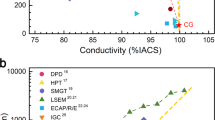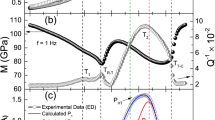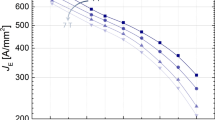Abstract
IN a recent communication1, Dr. E. W. Fell refers to a letter from us2 and comments on the yield point of molybdenum wires after a certain heat-treatment in hydrogen followed by nitrogen, as shown in Fig. 1 (No. 2) of our letter. He points out that in Fig. 1 (No. 1), which shows the load-extension curve for wires treated in hydrogen only, no such yield point is present, and attributes the difference in the shape of the two curves (that is, No. 1 and No. 2 in our letter) partly to the different heat-treatment affecting the crystal size of the two samples.
This is a preview of subscription content, access via your institution
Access options
Subscribe to this journal
Receive 51 print issues and online access
$199.00 per year
only $3.90 per issue
Buy this article
- Purchase on Springer Link
- Instant access to full article PDF
Prices may be subject to local taxes which are calculated during checkout
Similar content being viewed by others
References
NATURE, 138, 760 (Oct. 31, 1936).
Túry, P., and Krausz, S., NATURE, 138, 331 (Aug. 22, 1936).
Author information
Authors and Affiliations
Rights and permissions
About this article
Cite this article
TÚRY, P., KRAUSZ, S. Distortion and Yield Point of Molybdenum. Nature 139, 30–31 (1937). https://doi.org/10.1038/139030b0
Issue Date:
DOI: https://doi.org/10.1038/139030b0
This article is cited by
Comments
By submitting a comment you agree to abide by our Terms and Community Guidelines. If you find something abusive or that does not comply with our terms or guidelines please flag it as inappropriate.



